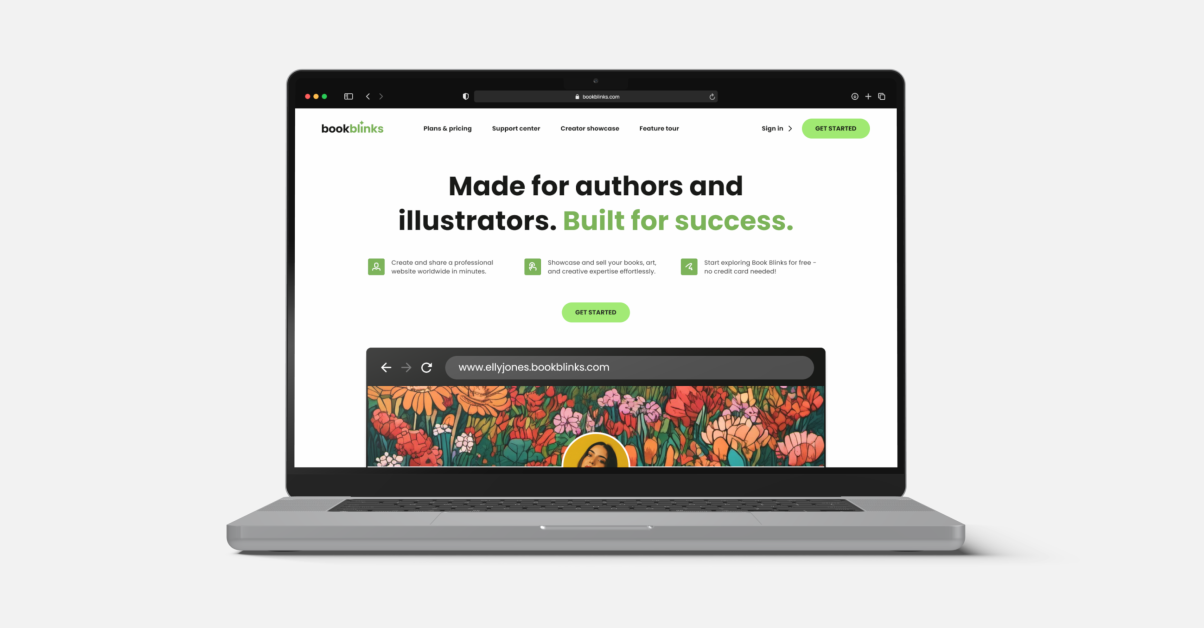What is Book Blinks?
SaaS platform geared toward empowering book authors and illustrators to build their websites and market their work efficiently.
Solution
A SaaS platform offering subscription plans that allow users to quickly build their websites with minimal onboarding and no steep learning curve.
What problems does Book Blinks solve?
Book Blinks helps authors save time and money by providing an easy-to-use platform for creating websites tailored to marketing and selling their work. With built-in features specifically designed for authors, it eliminates the need to learn complex tools like Wix or WordPress, which often require technical expertise.
How did we develop the solution?
We applied Design Thinking principles throughout the development process. The focus was on shaping an MVP that was both feasible and achievable within the given budget and timeline.
Workshops
We conducted two Design Thinking workshops: one focused on idea generation and the other on shaping the MVP.
Iterative design process
- Repetitive Cycles: The process involves repeated cycles or "iterations," where each cycle builds upon the previous one.
- Feedback-Driven: After each iteration, feedback from users, stakeholders, or team members is gathered and incorporated into the next version.
- Continuous Improvement: With each cycle, the product is improved, addressing issues, adding features, or refining design elements.
- Flexibility: This approach allows for adaptability. Changes in user needs, market conditions, or new ideas can be incorporated at various stages.
- Prototyping: Sometimes when complex features are at play, an initial prototype or version is created, which evolves over time into the final product.
Design system
A collection of reusable components, guidelines, and standards that help create a consistent look, feel, and experience across a product or platform is built during the development. It ensures that design elements like buttons, colors, typography, and layout are standardized, making it easier and less time-consuming for developers and designers to build and maintain product.
Technology we used
- Technology: PHP, Laravel, React, PgSQL, AWS, VITE, TypiCMS, Figma, JIRA, GDrive
- Integrations: Stripe, tawk.to, Hotjar
Challenges and takeaways
Time Constraints
We faced a tight timeline with no option to extend the budget or deadline. In collaboration with the Product Owner, we had to trim down several features that initially seemed essential but were actually "nice-to-haves" that would have delayed the time to market. We couldn't afford to dwell on decisions; we had to move quickly to stay on track and meet our deadline.
Usability Testing
The primary goal of usability tests was to determine whether the product effectively addressed the end-user's needs.
Testing KPIs
The prototype had to meet specific performance benchmarks before moving forward with development, ensuring that only a functional, value-driven product was released to the market.
Business impact
We successfully delivered a functional MVP on time and within budget. Despite initial concerns about missing certain features, the final product met the key objectives and performed as needed.
Key takeaway
For a startup project to succeed, strong product ownership and close collaboration with the development team are essential. We estimated a maximum delivery timeline of 4 months, beyond which burnout was a real risk. Our conclusion is that if future startup projects can't be delivered within 4 months, we risk losing both momentum and team morale.
